Turkey Holiday:
A Day in Istanbul
1 April 2006
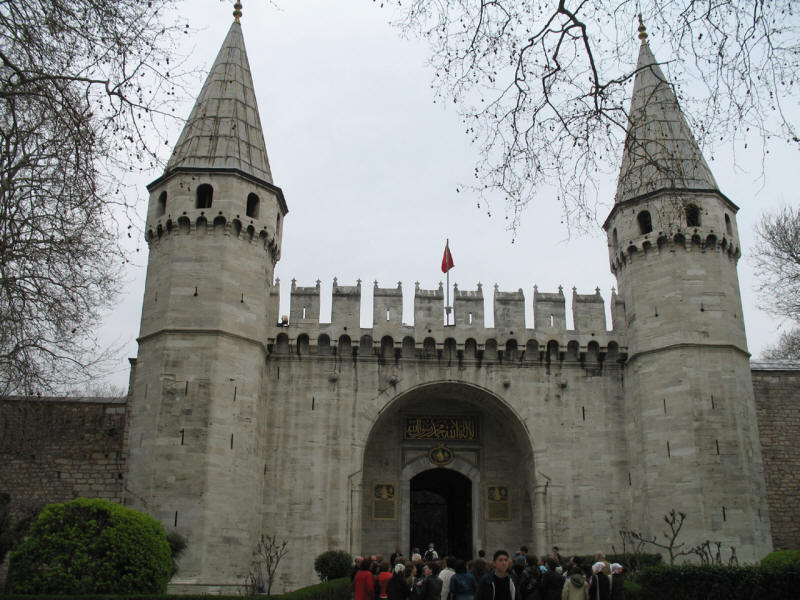
"Bab-us Selam", the Gate of Salutations, better known as the "Orta Kapi", Middle
Gate, which takes us through to the Second Courtyard of the Topkapi Palace
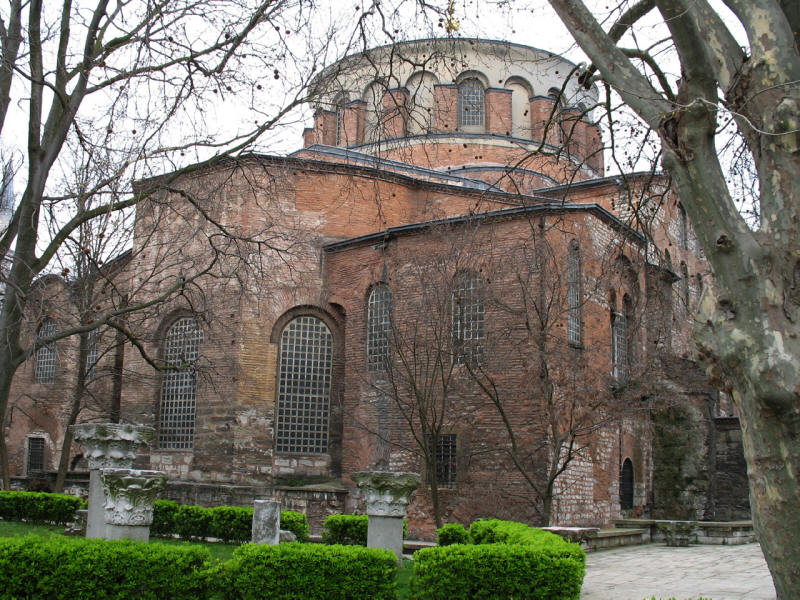
Hagia Eirene, the Church of Divine Peace, the first Byzantine church in Istanbul
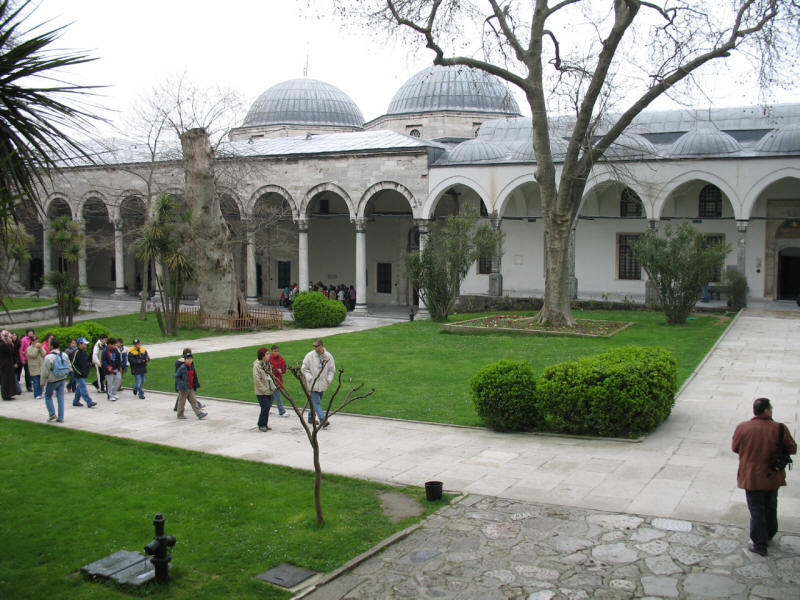
The palace is a huge, sprawling affair, and was home to the Sultans until the
end of the Ottoman Empire
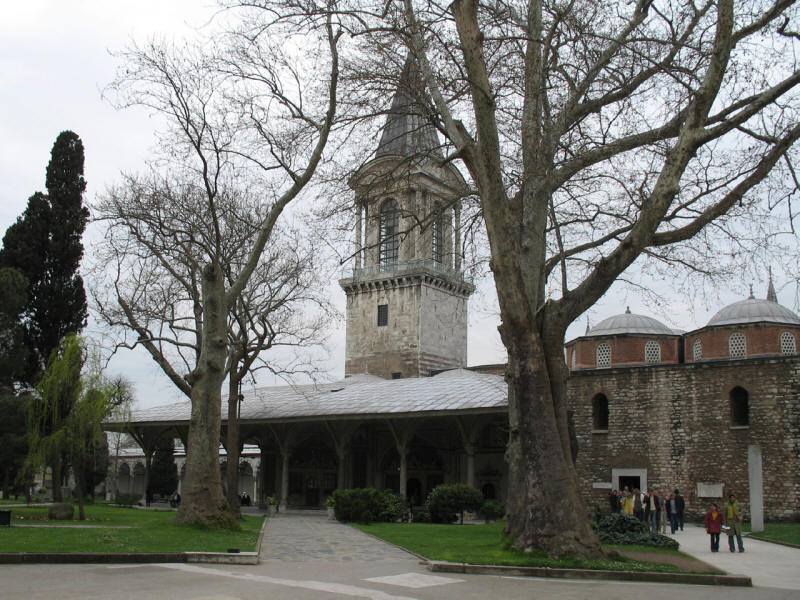
The Divan includes the Council Chamber, the Public Records Office and the Office
of the Grand Vezir (Prime Minister)
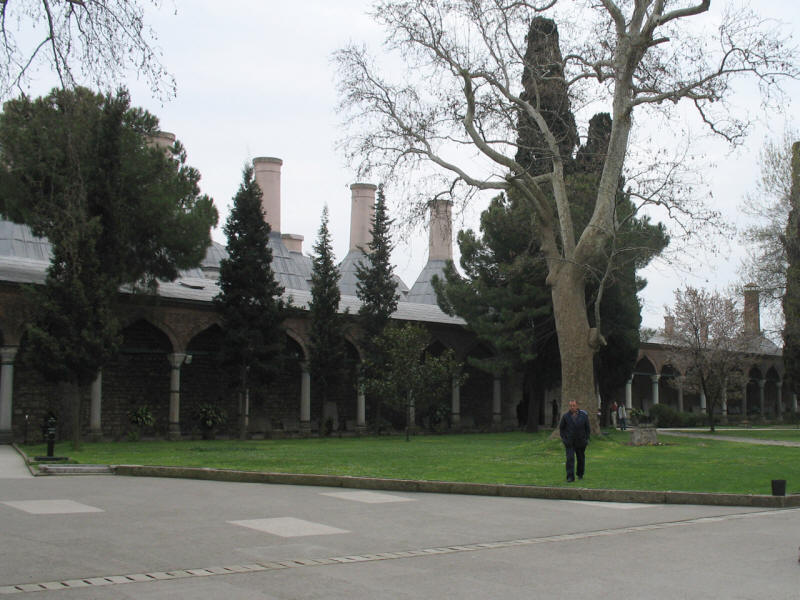
The chimneys of the palace kitchen, which produced food for the 60,000 soldiers
housed here. The kitchens now house the Chinese and Japanese porcelain
collection.
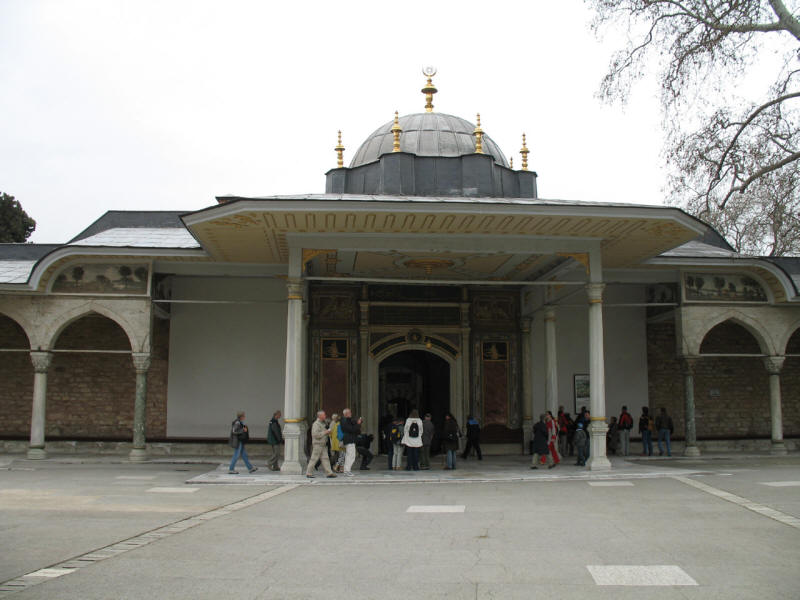
"Bab-us saadet", the Gate of Felicity, the entry to the Third Courtyard. This
area was strictly reserved for the use of high ranking officials and palace
children.
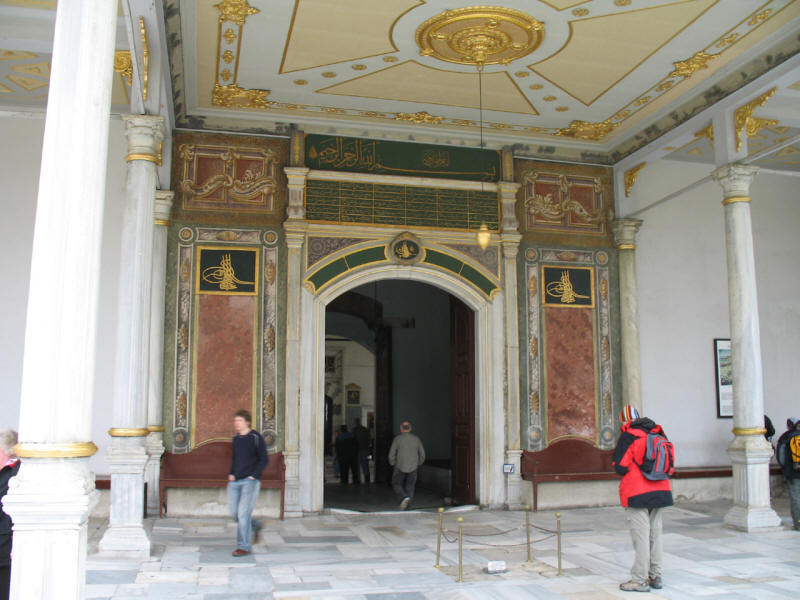
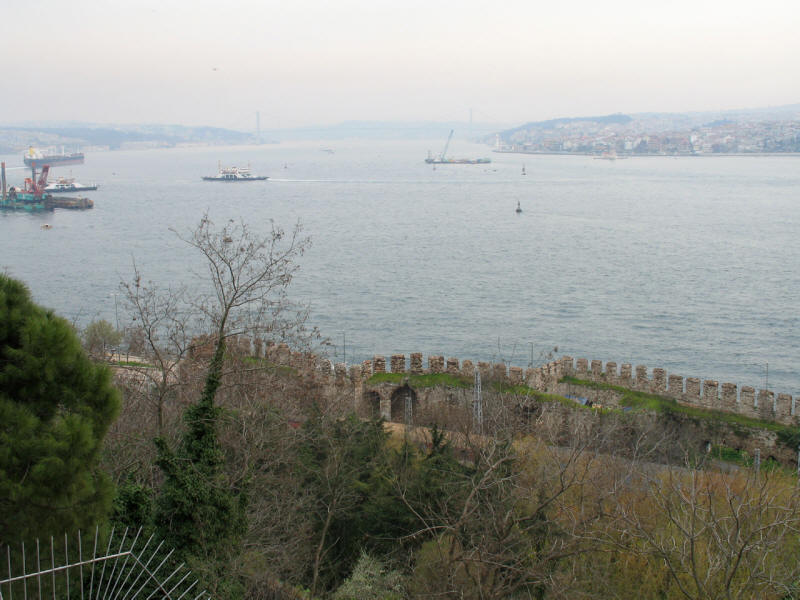
From the palace, the view across the walls of Constantinople up the Bosphorus

A panoramic view of the southern end of the Bosphorous looking down into the
Marmara Sea
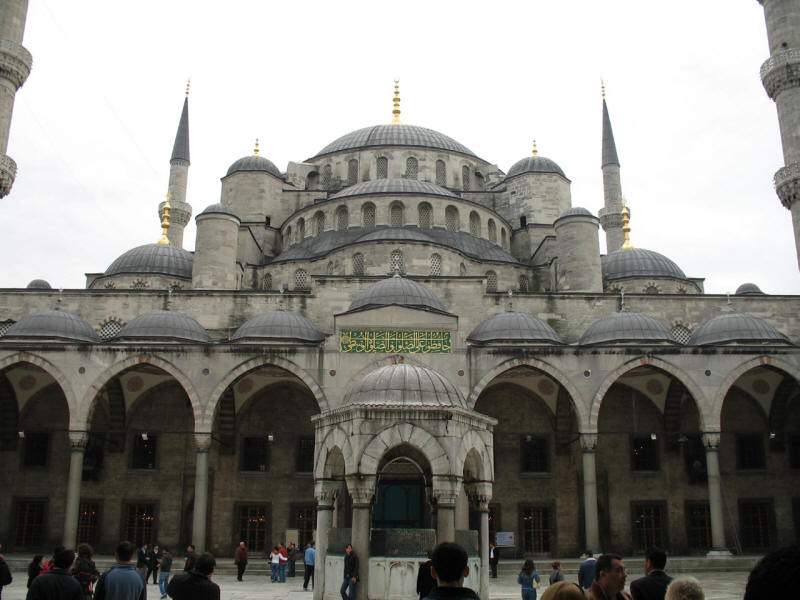
The Blue Mosque, or the Mosque of Sultan Ahmet I, built 1603 to 1617
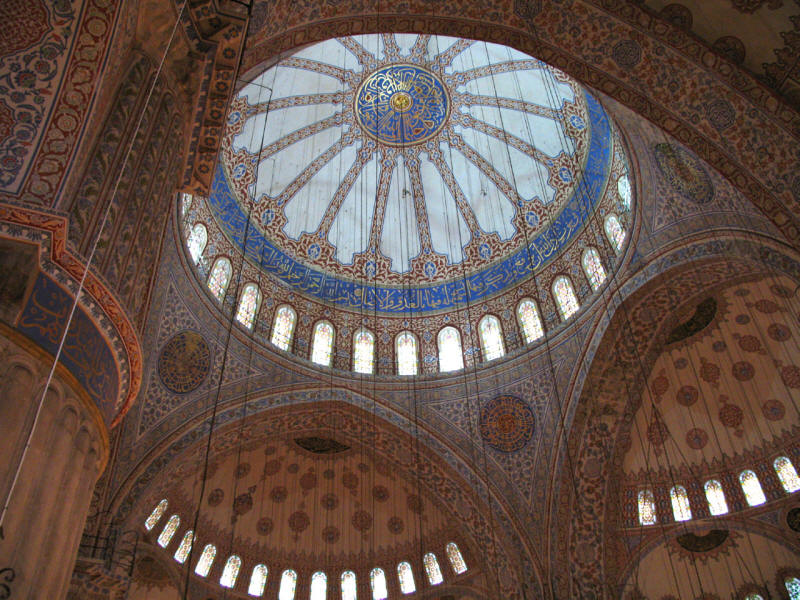
Inside, looking up to the magnificent dome
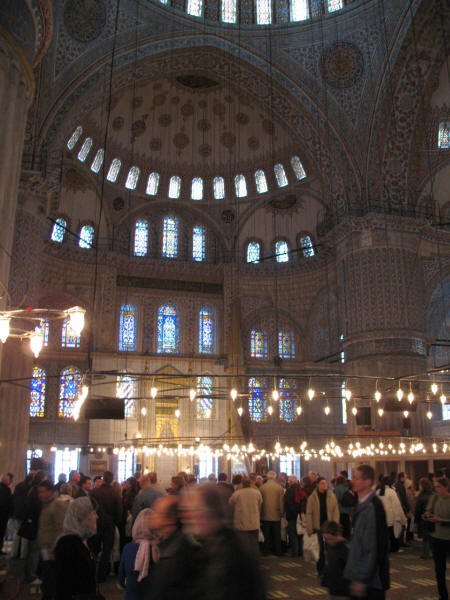
The chandeliers with their many supporting wires take away a little of the
majesty of the building, but it is still very impressive
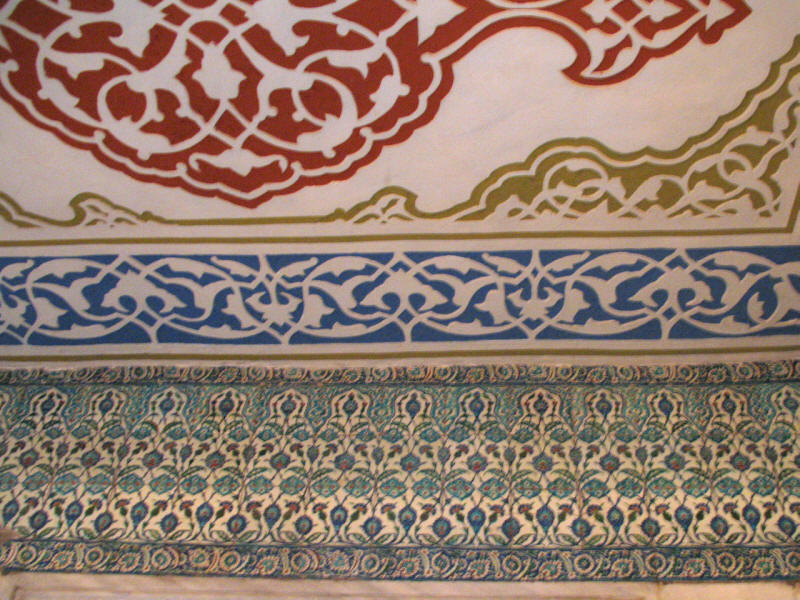
Some of the tiles on the wall that give the Blue Mosque its name
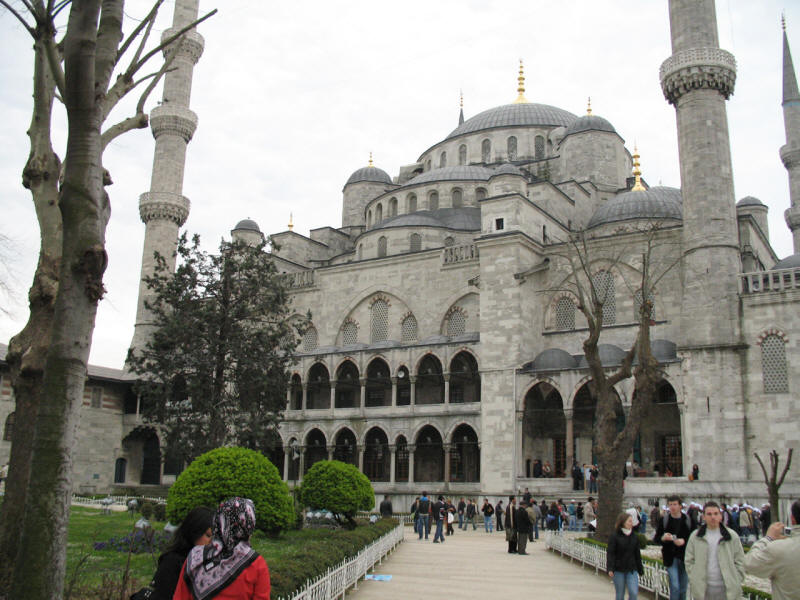
From the outside again, the people give some idea of the scale of the mosque
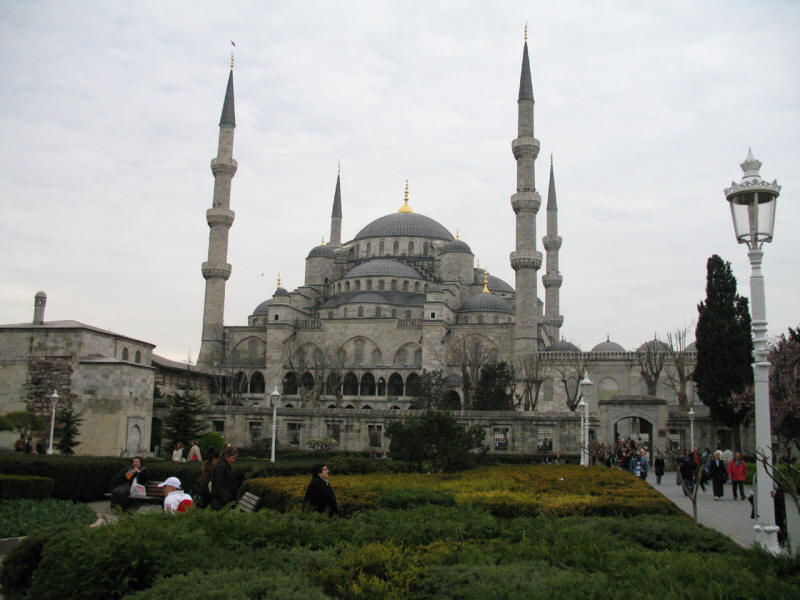
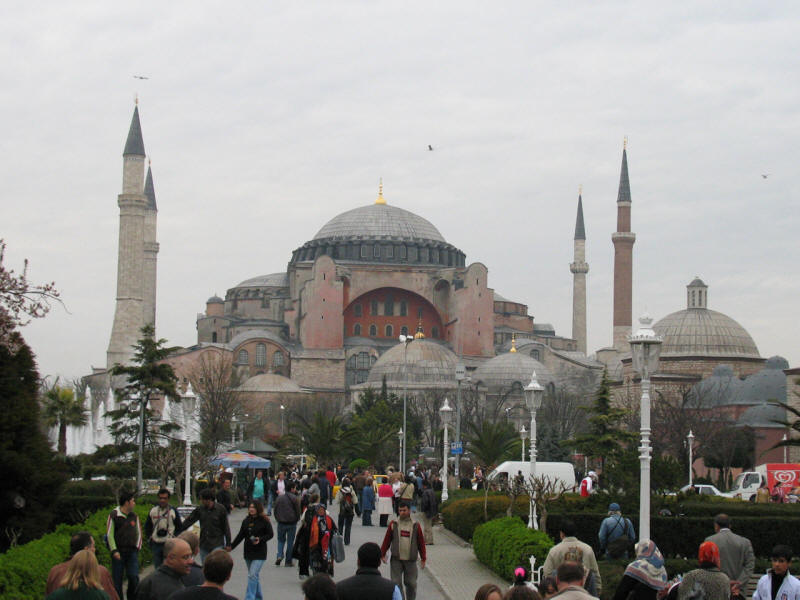
Going away from the newcomer, we walk to Hagia Sophia. Built between 532 and
537, with major repairs following an earthquake in 557, this is remarkable as a
very large building with its enormous dome, over 1400 years old. The church was
subsequently used as a mosque, but in 1934 Ataturk ordered that it be used as a
museum.
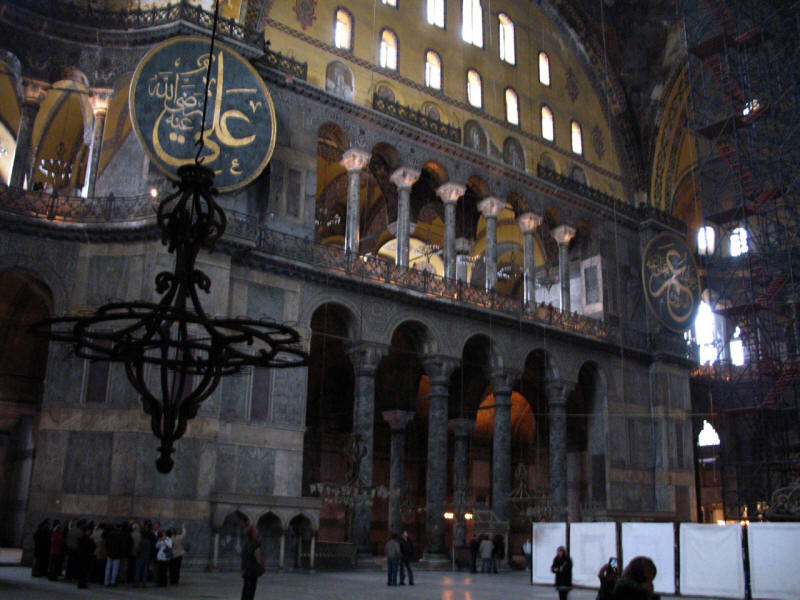
The inside is somewhat marred by the extensive scaffolding erected after the
earthquake of 1999 to hold up the roof when big cracks appeared. Discussions
continue as to the best way to deal with this problem, and the scaffolding is
likely to remain for some time. One remarkable thing about this 1400-year old
building is that much of it, including all the pillars, is constructed from
recycled material - many of the pillars were 1000 years old when they were
incorporated into the church.
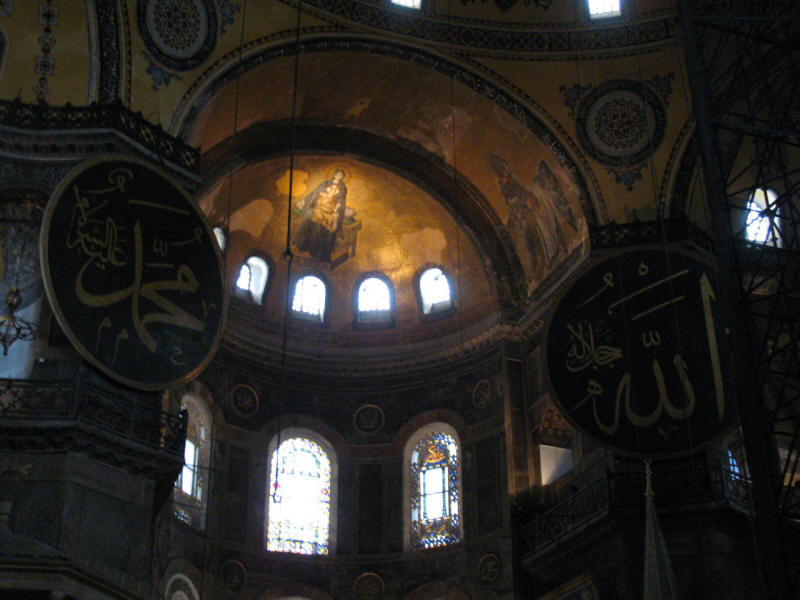
One of the few places in the world where you can see Mary, Jesus and the prophet
Mohammed together.
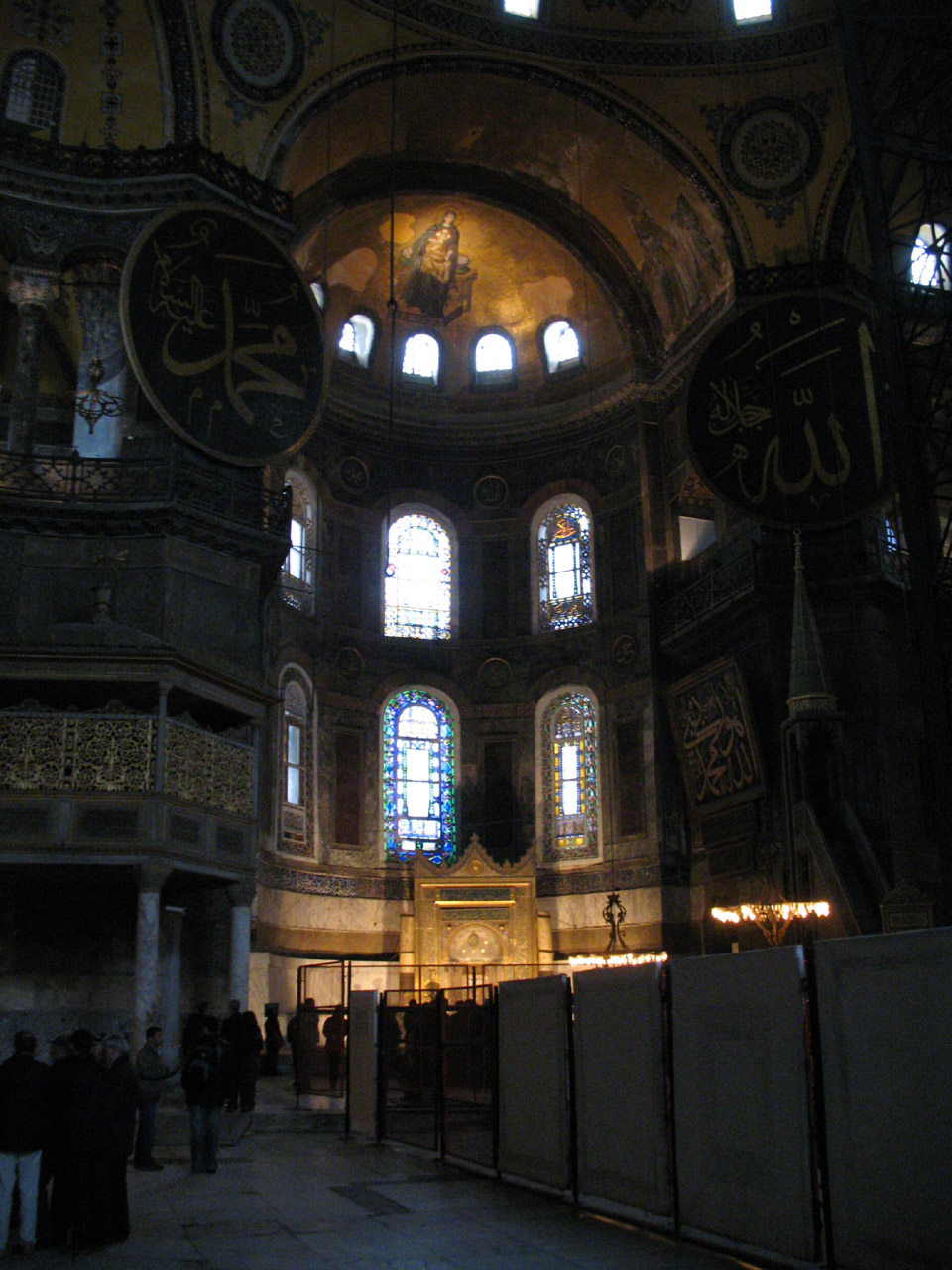
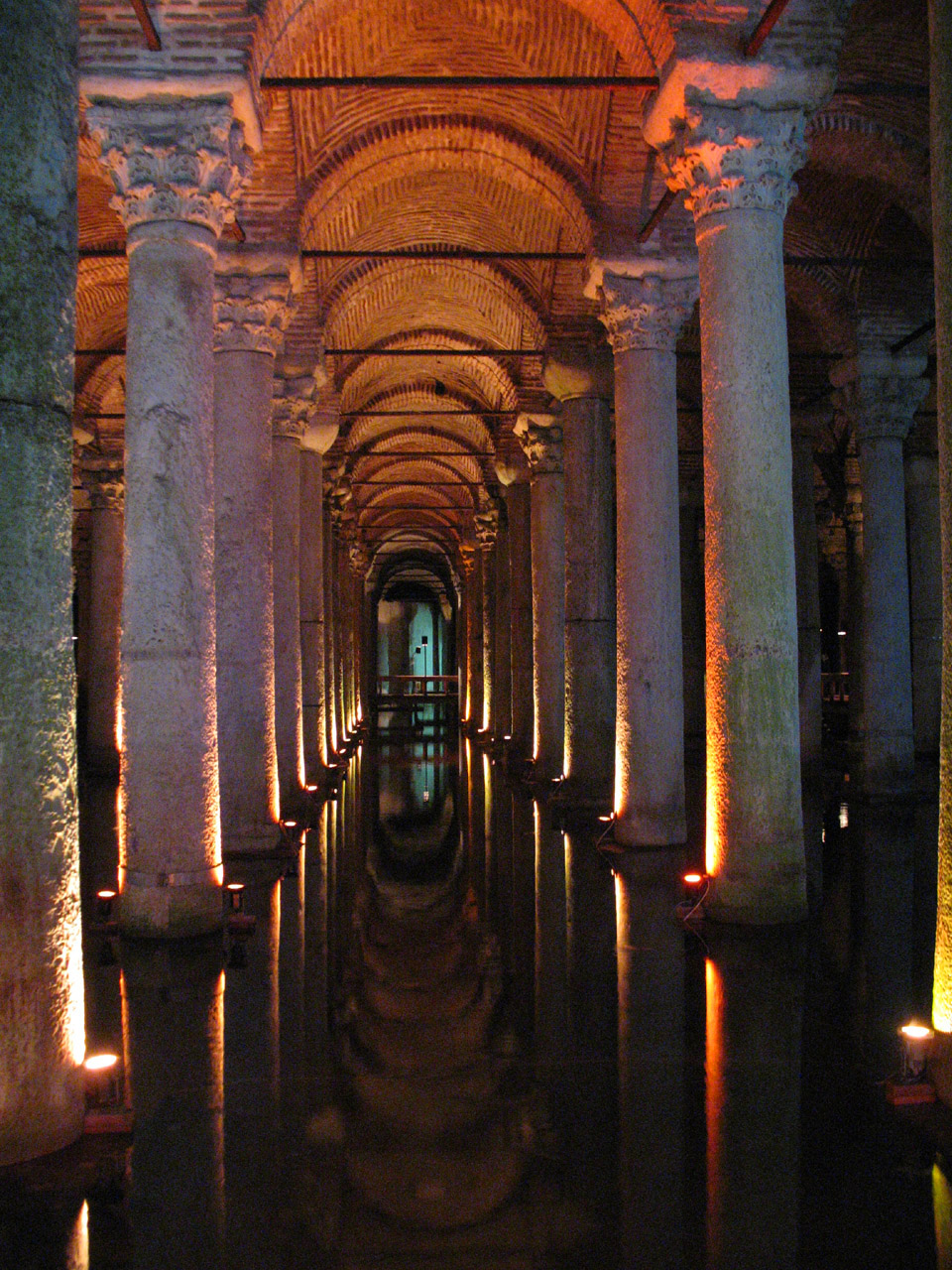
The Basilica Cistern, also known as the "Sunken Palace", was a reservoir
constructed by Justinian in 532 to supply the Byzantine Palace. The cistern was
restored in 1980's and today walkways have been constructed right through the
cistern and subdued illumination lends the place a suitably mysterious
atmosphere.
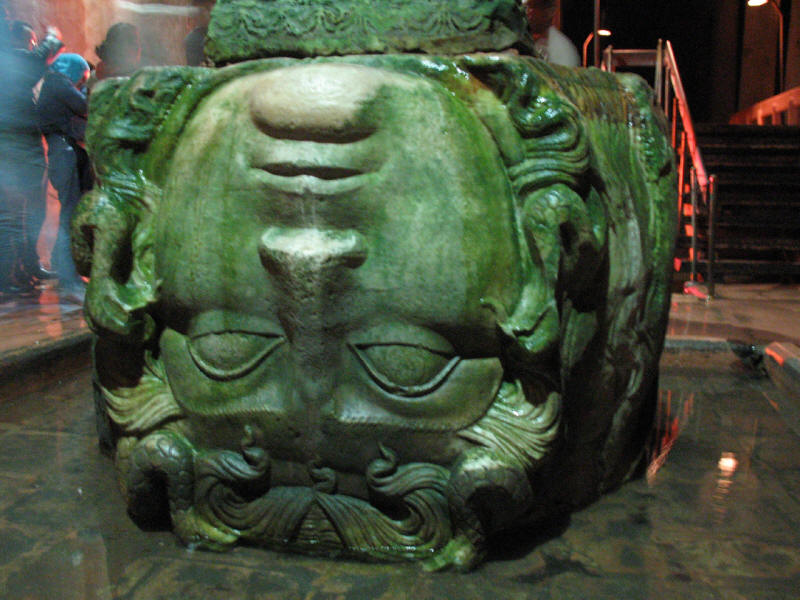
As with the church above, all the material used was recycled, including this
head of Medusa.
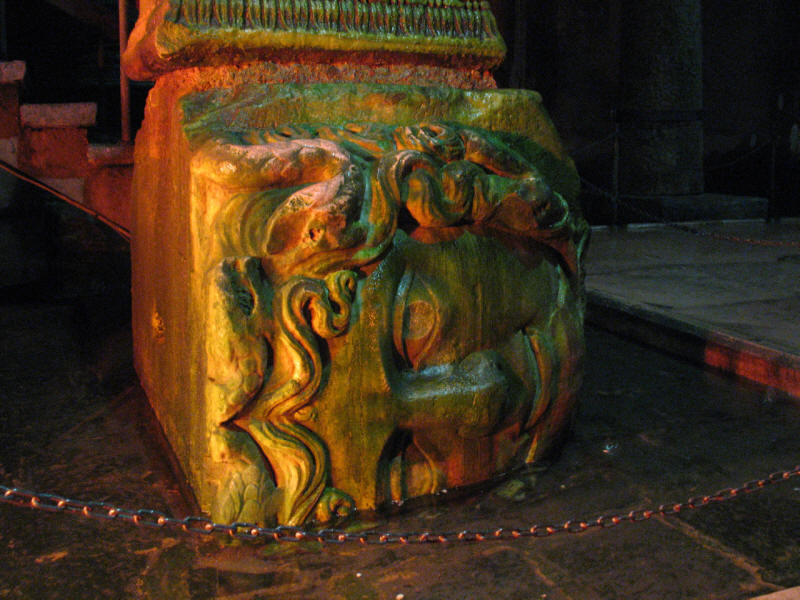
Whether they were deliberately not put the right way up by the Christian
builders, or simply they did not care how they used their recycled material, is
not clear.
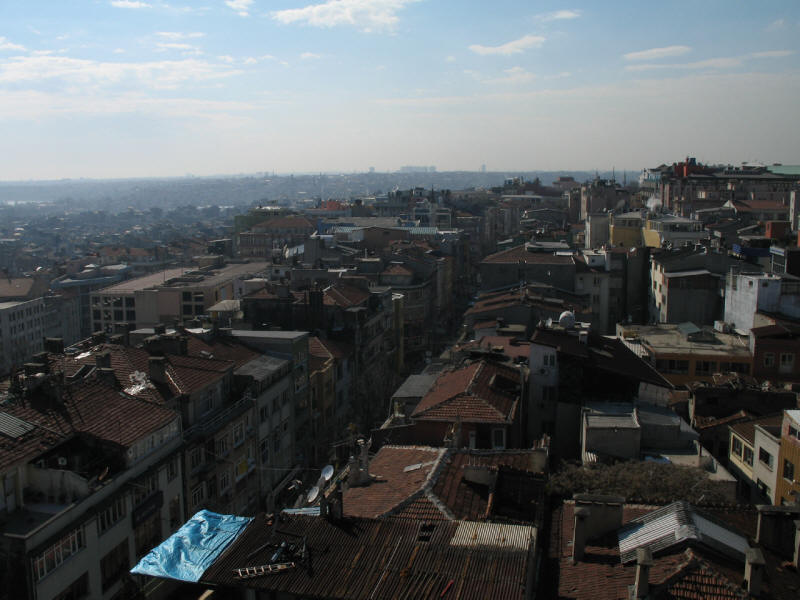
From the top of our hotel, the roofs of Istanbul
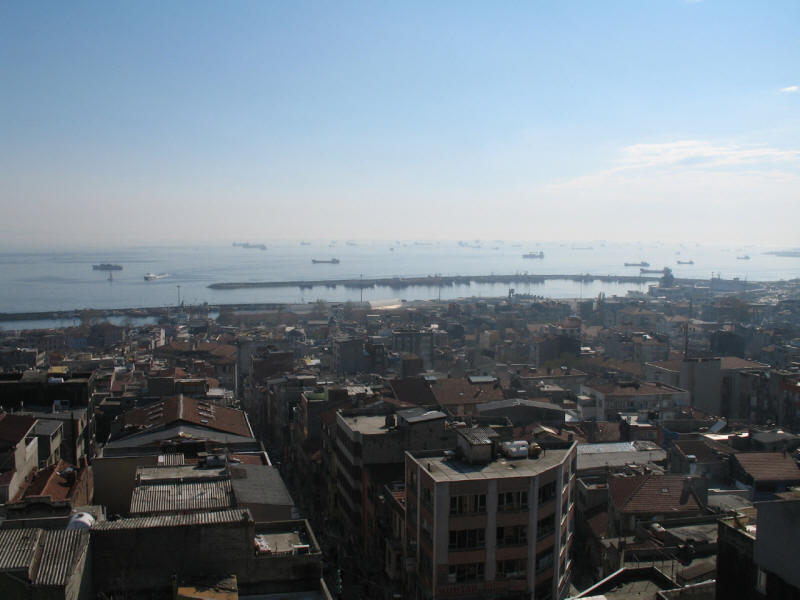
The harbour and the very many moored ships
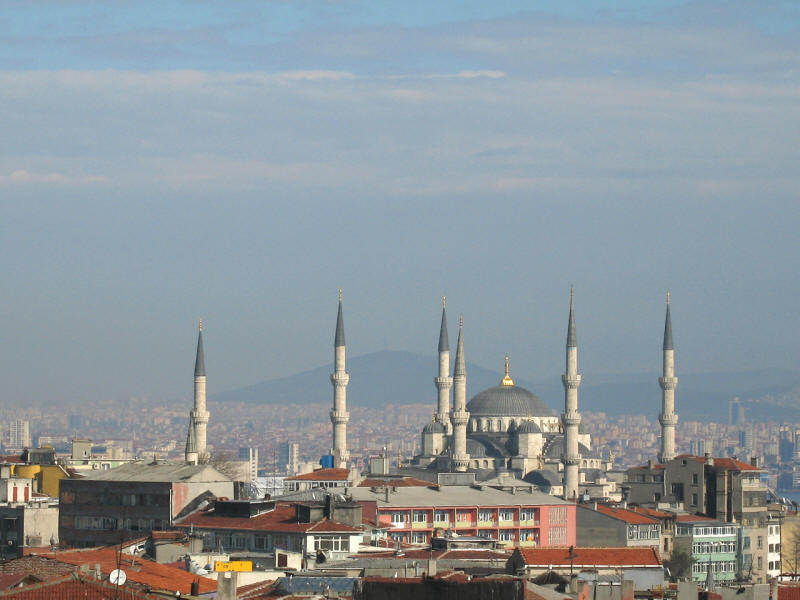
A last look back to the Blue Mosque with its then-unique six minarets
|